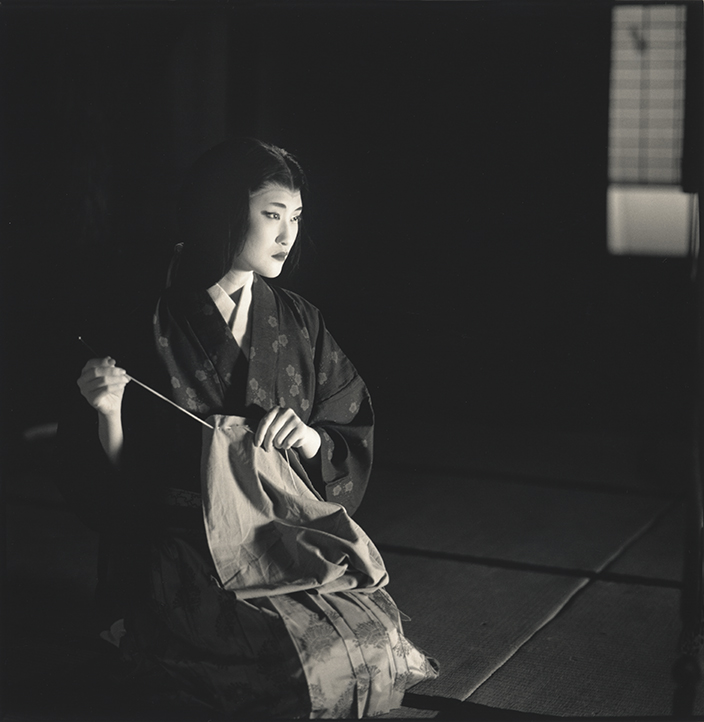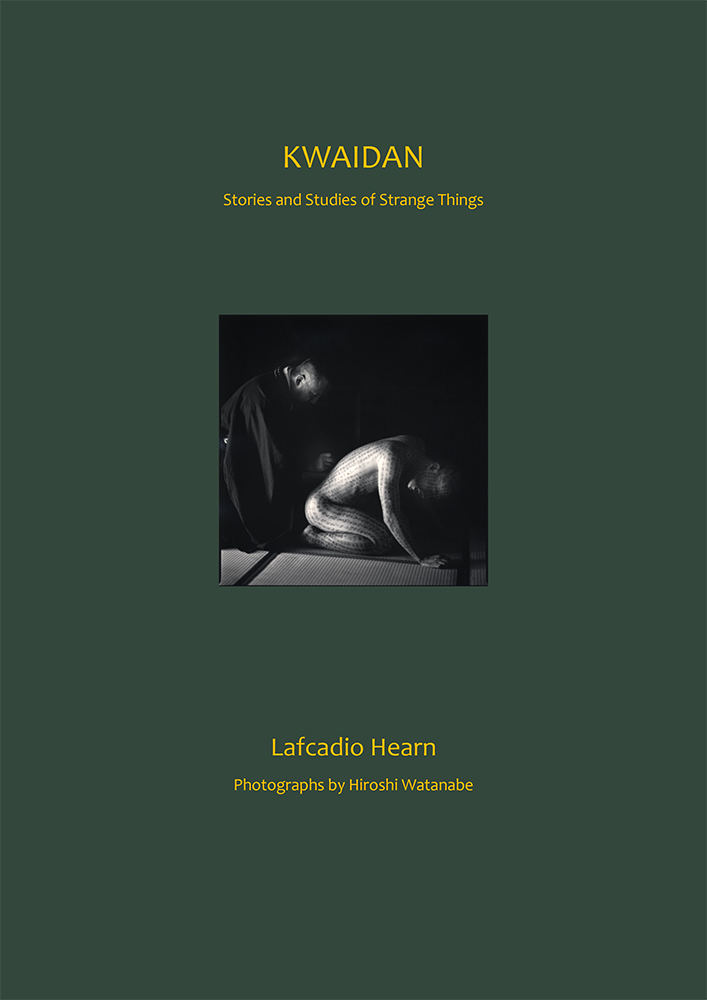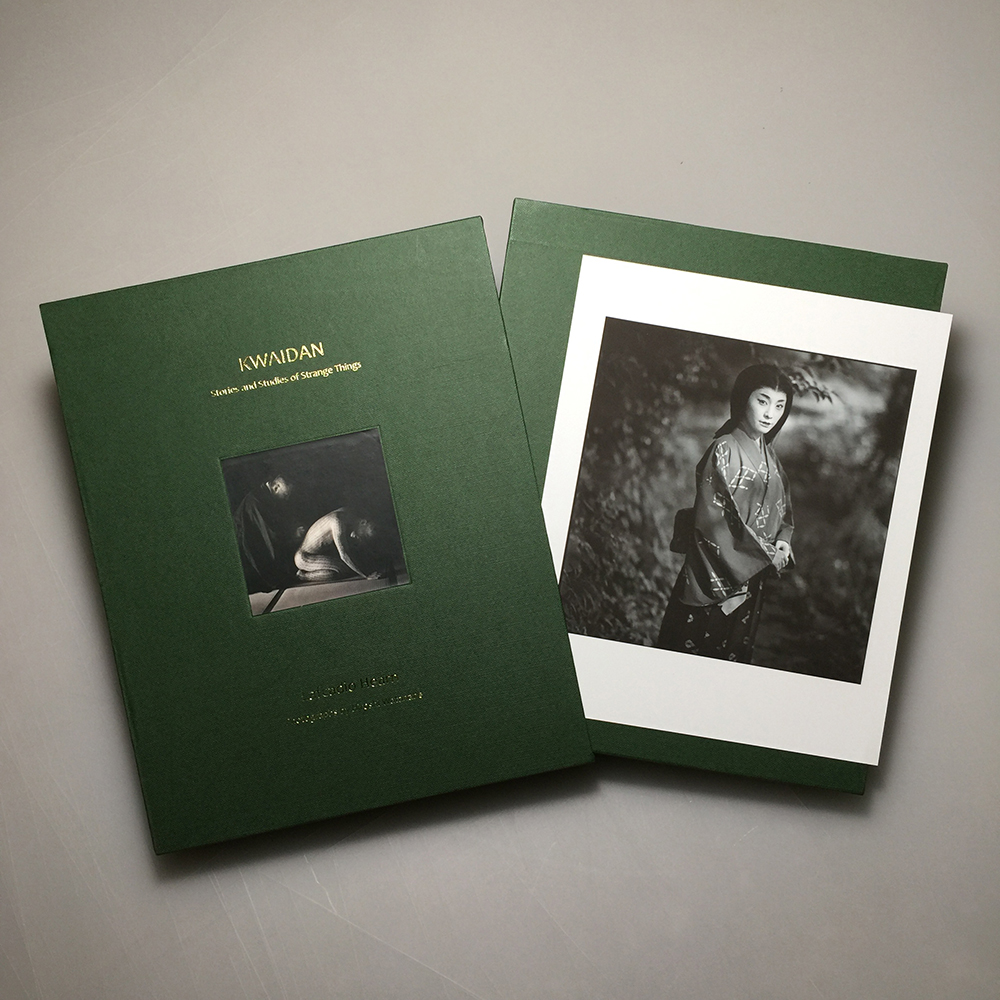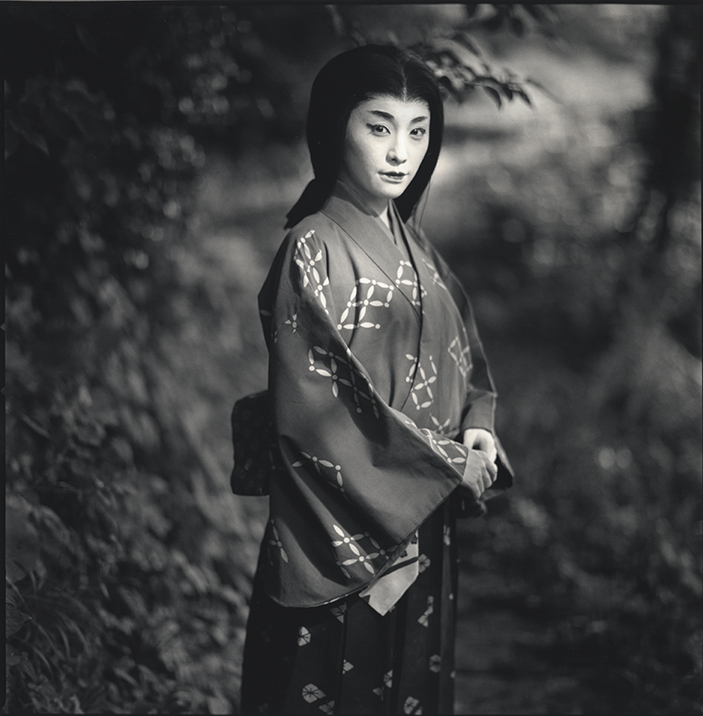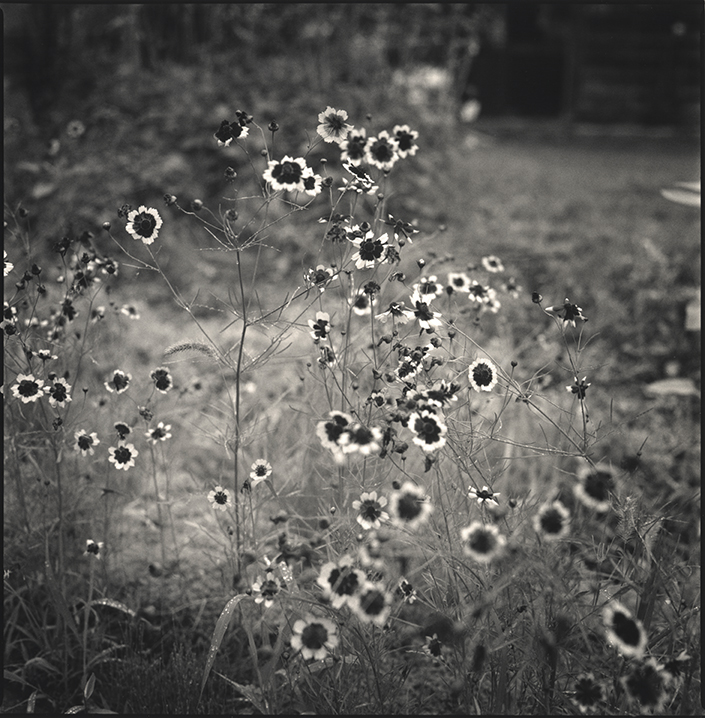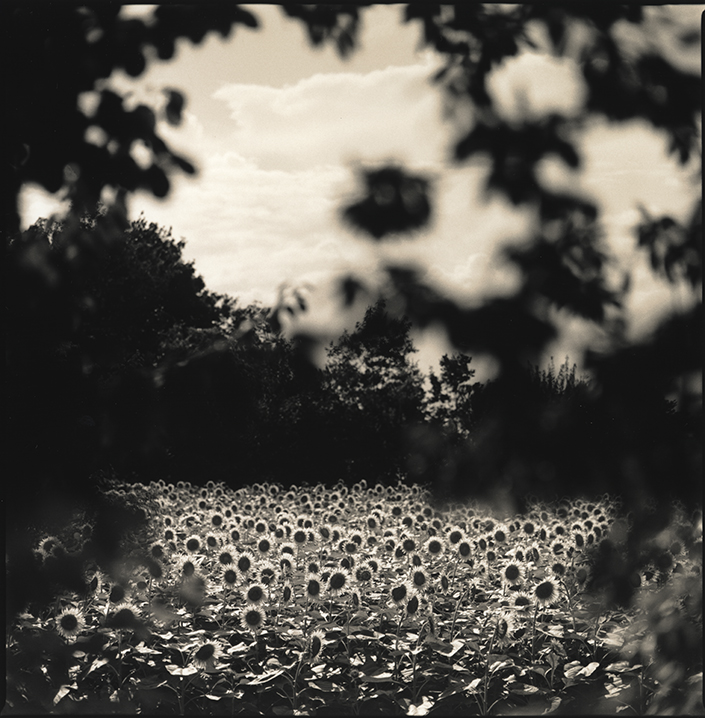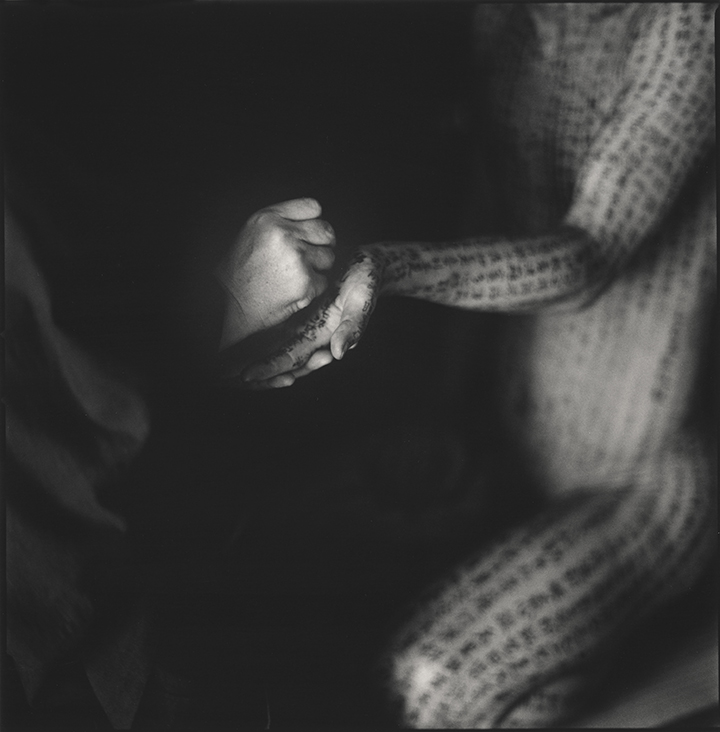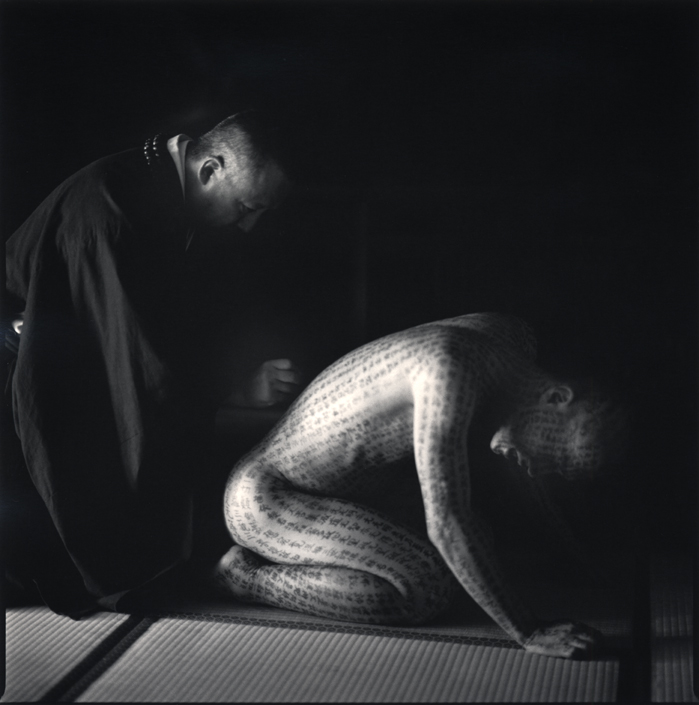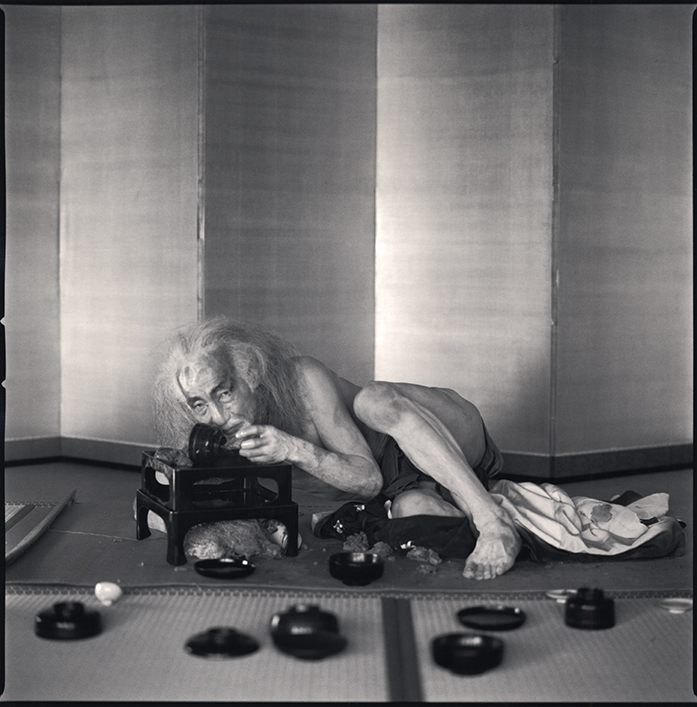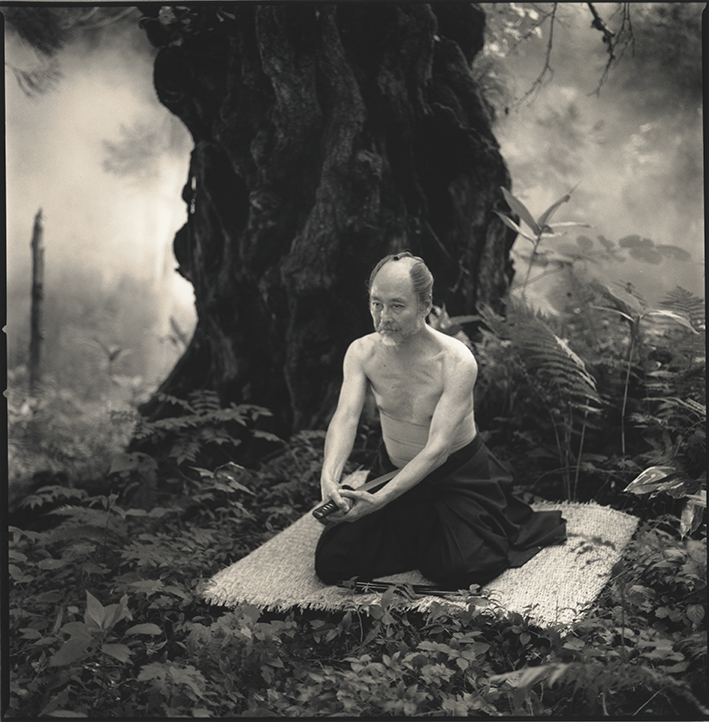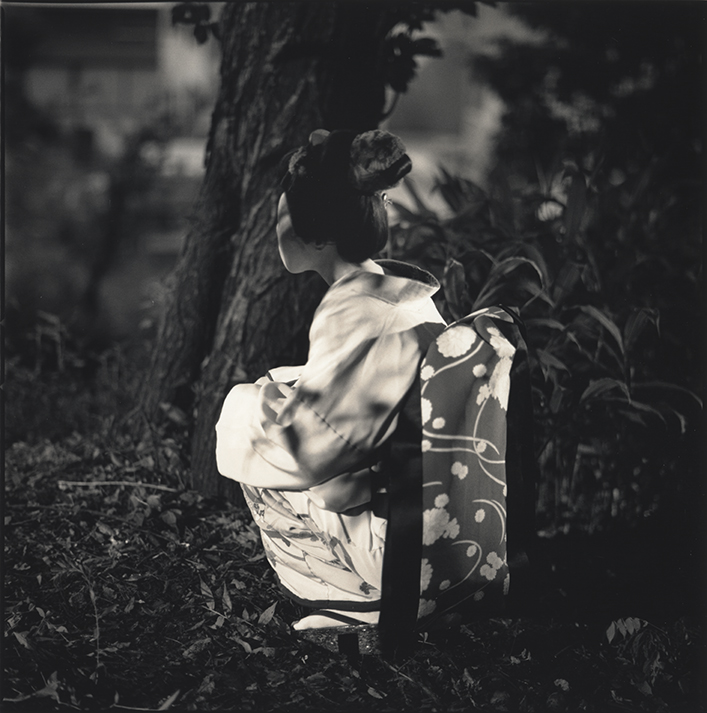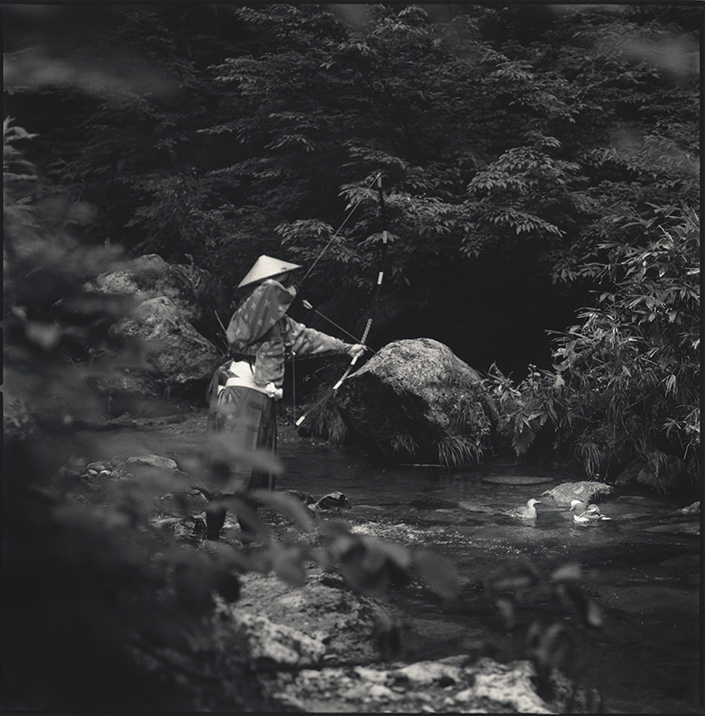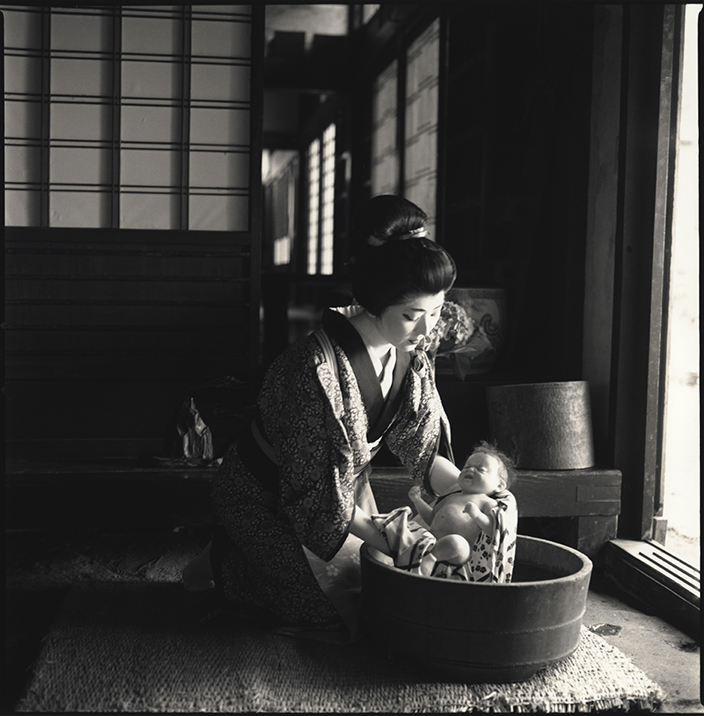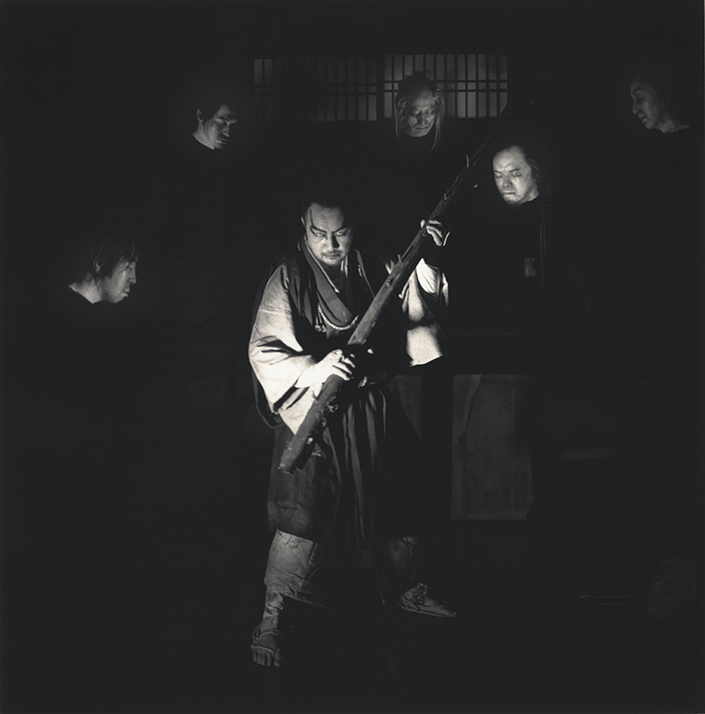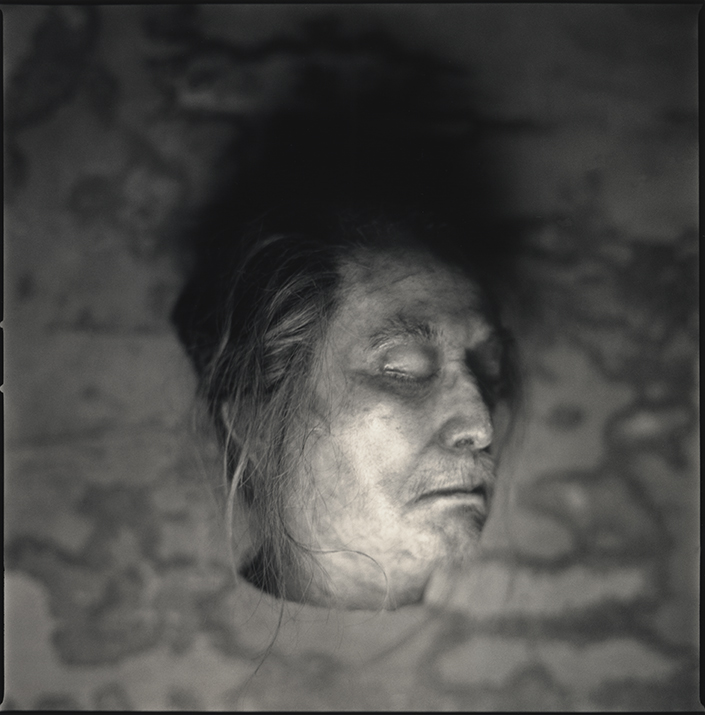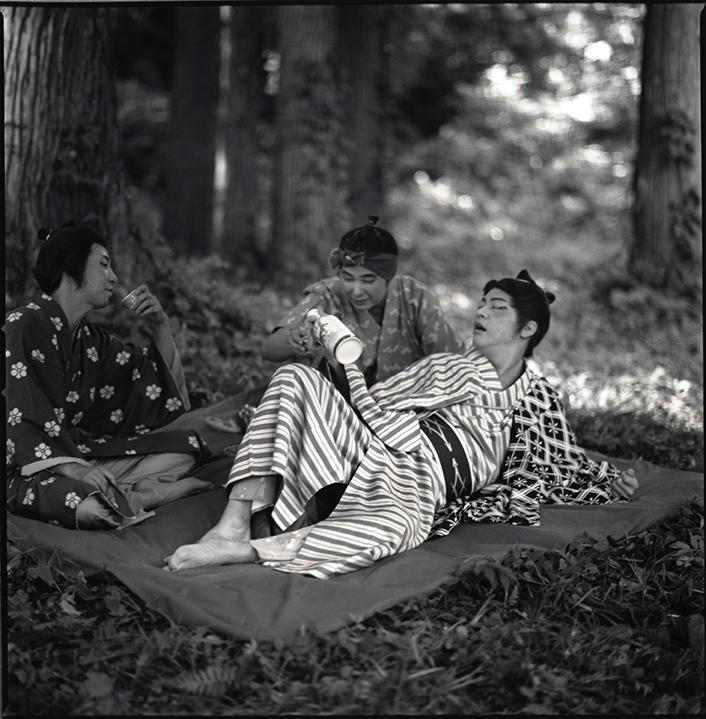Hiroshi Watanabe: KWAIDAN: Stories and Studies of Strange Things
One of the photographers I admire most in the world is Hiroshi Watanabe. I am lucky enough to call him a friend and enjoy that we live in the same neighborhood in Los Angeles. My walls reflect a significant collection of his images that continue to inspire and delight me on a daily basis. Some time ago, he told me about a project where he was visually interpreting a collection of Japanese horror stories–and needless to say, I couldn’t wait to see the finished series.
Hiroshi has just released KWAIDAN: Stories and Studies of Strange Things, “a new edition of classic short Japanese horror stories in their original form as written by Lafcadio Hearn over a century ago. Hearn was an Irishman who was born in Greece, grew up in Ireland and emigrated to the US where he became a writer. He later moved to Japan and married a Japanese woman, had children and became a professor. He traveled all around Japan with his wife and heard many strange traditional folklore stories. Kwaidan is a collection of those short stories that he wrote in English for Western appreciation. He died in Japan soon after the publication of Kwaidan. Those eerie, magical horror stories are now visually revitalized with accompanying photographs by award-winning photographer Hiroshi Watanabe, who has lovingly brought this edition into print.”
KWAIDAN: Stories and Studies of Strange Things is available at Amazon, Photo-eye books, and Beyond Words in the UK.
Also, limited edition book with a print is available directly from Hiroshi Watanabe. The print (silver gelatin print, image size 6×6, printed by the artist) is inserted in the book and cased in double slip-in case. There are 4 images to choose from and each image is edition of 25. Please inquire at contact@hiroshiwatanabe.com.
Hiroshi Watanabe was born in Sapporo, Hokkaido, Japan. He graduated from the Department of Photography of Nihon University, and moved to Los Angeles, where he worked as a production coordinator for Japanese television commercials and later co-founded a Japanese coordination services company. Hiroshi Watanabe obtained an MBA from the UCLA Anderson Business School in 1993. Two years later, however, his earlier interest in photography revived, and he started to travel worldwide, extensively photographing what he found intriguing at each moment and place. Since 2000, Hiroshi Watanabe have worked full-time at photography.
After Hiroshi Watanabe produced five self-published books, his first collection to be published conventionally was I See Angels Every Day, monochrome portraits of patients and scenes from San Lázaro psychiatric hospital in Quito, Ecuador. This work won Japan’s 2007 Photo City Sagamihara Award for professional photographers.
In 2006, Hiroshi Watanabe won a Critical Mass Award from Photolucida, Portland, OR, resulting in publication of his monograph Findings in 2007.
In 2006 and 2007, Hiroshi Watanabe traveled to North Korea, and his book documenting the experience, titled Ideology of Paradise, was published in Japan. With that work Hiroshi Watanabe won First Prize in the Santa Fe Center Project Competition in 2008.
In 2009 Hiroshi Watanabe received a commission from the San Jose (California) Museum of Art to document from an artist’s perspective subjects of his choice relating to the city’s Japantown. He decided to photograph artifacts from the Japanese internment camps established during the Second World War. All images from this project were purchased by the museum and exhibited in 2011.
In 2010 Hiroshi Watanabe was chosen as one of fourteen artists invited to photograph Venice, Italy, for a project called Real Venice, a major art initiative to raise funds for Venice. The artists were commissioned to visit the city and create a portfolio of images with total artistic freedom. The result, the Real Venice exhibition, was shown during the 54th Venice Biennale at San Giorgio Maggiore Abbey and later at the Somerset House in London (May 31 to September 30 and October 10 to December 11, 2011, respectively).
In 2013 Hiroshi Watanabe was invited to participate in Bull City Summer in Durham, North Carolina, a project inspired by the 25th anniversary of the movie Bull Durham. Ten nationally and internationally acclaimed photographers documented the 2013 season at the Durham Bulls Athletic Park, home of the legendary minor league baseball team. The exhibit was shown at the North Carolina Museum of Art (February 23 to August 31, 2014).
From April 4 to July 21, 2014, his photographs of artifacts from the Tule Lake Japanese internment camps were the centerpiece exhibit in The Art of Survival: Enduring the Turmoil of Tule Lake, at the Favell Museum in Klamath Falls, Oregon. The exhibition is currently on tour in the US.
In 2016 Hiroshi Watanabe received a grant from the Pollock-Krasner Foundation. www.pkf.org
KWAIDAN: Stories and Studies of Strange Things
Lafcadio Hearn wrote the book in English for English-speaking audience and was published more than a century ago in the US. But in US, very few people seem to know him. On the contrary, the book was translated (by Japanese) several times and has been widely read in Japan, even in school textbooks. Everyone in Japan knows him and the stories. The irony is that what Japanese are reading are not the author’s original language but are Japanese translations. Small number of people, relatively speaking, are reading his original English writings in spite of previous publications of the title. I thought if we republish the book with photographic visualization of the characters and the scenes, it might help appreciate the stories and revitalize the interest in the stories.
I personally have special attachment to these stories as I read the book to learn English when I studied the language in the middle school in Japan. My tutor gave me two of the same books, one in English and one in Japanese, and we read and compared the texts side by side. I read the stories over and over but I never got tired of the fascinating stories that captivated my young mind. I wanted to bring to life the images that were planted in my head when I read the book, and that was why I made these photographs.
I actually had this idea of photo book project several years ago but it turned out to be difficult to pursue because of financial requirement. Two years ago, I was nominated for Pollock-Krasner Foundation Grant and I received the grant. With that grant money I was able to complete the project.
When did you discover Kwaidan and what made you want to create visuals of the stories?
I read the book when I was studying English in the middle school. My tutor brought two books of Kwaidan, one in Japanese and one in English. We read and compared sentence by sentence. That was how I leaned English. The stories fascinated me and I did not mind studying the language. As I read the book, I imagined the scenes and characters. Half century later, I wanted to bring out my imaginations in visuals in photographs. The book (Japanese translation) is very popular and standard in Japan and everyone there knows the stories.
What were the challenges in making the work?
The biggest obstacles were that I had to create the scenes which required locations, props, models, and people such as make-up, wardrobe, lighting crew, etc., That of course meant a lot of expenses. But nonetheless, I enjoyed the process and challenges.
As dark as the stories are, the photographs have their own beauty. After you finished the project, did your understanding of the book change?
No, I don’t think my understanding changed. I recreated my imaginations as I imagined. Everything remained same in the way I understood and intended.
What’s next?
Enjoy life until I get an urge.
Posts on Lenscratch may not be reproduced without the permission of the Lenscratch staff and the photographer.
Recommended
-
Salua Ares: Absense as FormNovember 29th, 2025
-
Ricardo Miguel Hernández: When the memory turns to dust and Beyond PainNovember 28th, 2025
-
Pamela Landau Connolly: Columbus DriveNovember 26th, 2025
-
KELIY ANDERSON-STALEY: Wilderness No longer at the Edge of ThingsNovember 19th, 2025
-
Jackie Mulder: Thought TrailsNovember 18th, 2025

